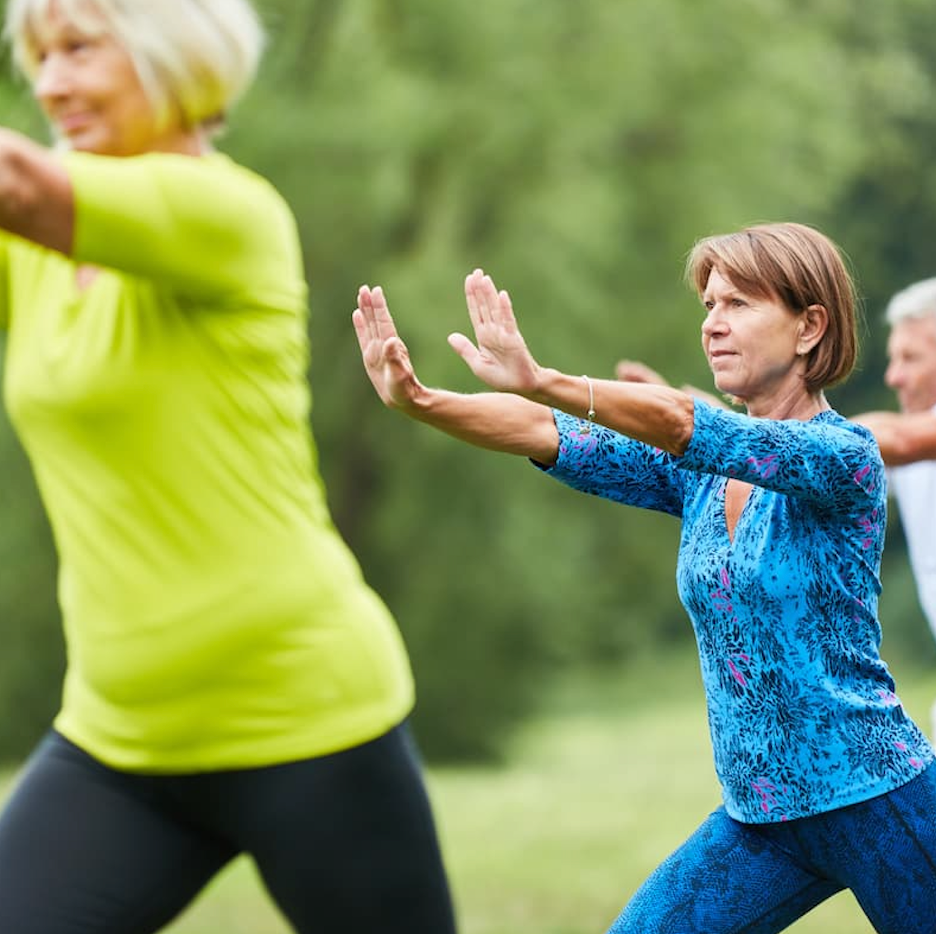Tai Chi Program Shows Significant Cardiovascular Benefits for Postmenopausal Women
Tai Chi training led to significant reductions in blood pressure and vascularity markers in postmenopausal women, suggesting its potential as a therapeutic exercise to prevent cardiovascular disease.
By
Lana Pine
| Published on September 28, 2024
4 min read
Credit: Adobe Stock/Robert Kneschke

A 24-week Tai Chi (BaFa WuBu) intervention with real-time heart rate monitoring significantly improved vascular health in middle-aged and older postmenopausal women, reducing blood pressure, vascular stiffness and improving lipid metabolism.
The study, published in Sensors, highlights Tai Chi's potential as a non-pharmacological therapy to manage cardiovascular health in this population, emphasizing the benefits of regular, gentle exercise for preventing vascular diseases.
Postmenopausal women have an increased risk of cardiovascular disease due to lowered estrogen levels, which play an important role in cardiovascular protection. Previous research has shown reduced estrogen is linked to hypertension and atherosclerosis and menopause greatly increases the risk of atherosclerosis compared with similarly aged men.
Aerobic exercise can help lessen these risks, slow atherosclerosis progression, reduce the risk of a cardiovascular event, lower cholesterol levels, reduce arterial inflammation and improve blood vessel elasticity.
Tai Chi, a non-pharmacological, low-intensity, easy-to-perform aerobic exercise may help improve cardiovascular health among this patient population. This slow and steady form of exercise also puts less pressure on the joints and bones and can improve blood circulation.
A group of 40 postmenopausal women were randomly assigned to either the Tai Chi group or a control group. The exercise cohort received 24 weeks a simplified, beginner-friendly version of Tai Chi called BaFa WuBu. This type of Tai Chi was chosen because traditional forms can be too complicated for older adults who are unfamiliar with the practice.
Heart rate sensors were used for real-time monitoring of the training to determine the impact of Tai Chi on vascular function, lipid metabolism and atherosclerosis progression. Assessments included blood pressure, body composition, vascularity and blood parameters, which were collected both pre- and post-intervention.
“Previous studies on the therapeutic effects of Tai Chi on middle-aged and older menopausal women have been less well researched and have had shorter intervention cycles,” wrote a team of Chinese investigators.
After the intervention, participants in the Tai Chi group had significantly lower systolic blood pressure and blood pressure viscosity when compared with controls. Diastolic blood pressure was significantly higher in this group.
Compared with baseline measurements, the exercise group had significantly reduced systolic blood pressure, right and left ankle mean arterial pressure, right and left arm pulse pressure difference, and blood pressure viscosity. Again, these participants demonstrated significantly higher diastolic blood pressure post-intervention.
The relatively small sample size and the inclusion of only healthy menopausal women may have hindered generalizability, according to investigators. Additionally, they were unable to determine the sustained effects of the exercise intervention and did not have long-term follow-up information, such as improvements in quality of life at week 24. As the study did not compare Tai Chi to other forms of exercise or other non-pharmacological options, future research should include other interventions and assess their differences. These studies should also enroll more diverse groups, including those with cardiovascular disease, to confirm the efficacy of this practice as a viable intervention.
Investigators highlighted the importance of the real-time heart rate sensor in this study as they were able to monitor and adjust the heart rate response and exercise status of participants, which added to the credibility of Tai Chi’s effect.
“This technological innovation not only enhances the scientific validity of the study, but also provides scientific support and theoretical foundation for Tai Chi (BaFa WuBu) as an effective exercise therapy,” they concluded.

